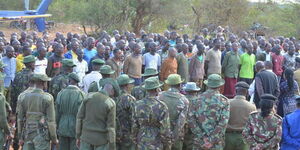The Ministry of Agriculture and Livestock Development has come under scrutiny following the gazetting of the water buffalo as a food animal in Kenya.
Addressing the Agriculture Committee in the Senate on Tuesday, March 4, nominated Senator Catherine Mumma questioned whether the declaration of the water buffalo as a food animal followed due process.
She also demanded to know whether the classification of the buffalo was based on statistical data supporting its designation as a food animal.
The nominated senator called on the committee to provide full details on the involvement of the Kenya Wildlife Service (KWS) in the research that led to the controversial announcement.
During the meeting, KWS officials were also put to task to disclose the period and findings of the research, as well as the list of farms that participated in the study.
Mumma’s sentiments were backed by Bungoma Senator David Wakoli, who demanded to know how the Ministry of Agriculture declared the animal as food without conducting meaningful public participation.
He also tasked the committee with explaining the economic viability of the animal as a local food source and its potential contribution to Kenya's food security and the broader national economy.
The demands come barely a month after Agriculture Cabinet Secretary Mutahi Kagwe gazetted the recognition of the water buffalo as a food animal in the country.
“In exercise of the powers conferred by section 2 of the Meat Control Act, the Cabinet Secretary for Agriculture and Livestock Development declares the Domesticated Water Buffalo (Bubalus bubalis) as a food animal for purposes of the Act,” read the notice dated 31 January.
Water buffalo meat, often referred to as carabeef, is commonly consumed as beef in some countries, such as India. It is also a major source of export revenue for the Asian nation.
Despite its consumption, in some Asian regions, water buffalo meat is less preferred due to its toughness. However, its hide is widely used in the leather industry, particularly for shoe manufacturing.
It is worth noting that the animal commonly seen during safari tours is the Cape buffalo, also known as the Southern Savanna buffalo, which is considered a wild animal.












